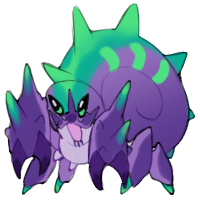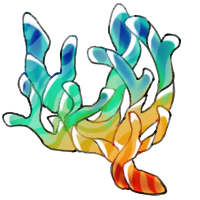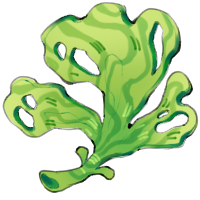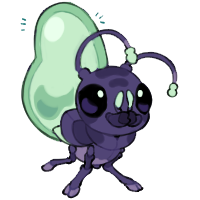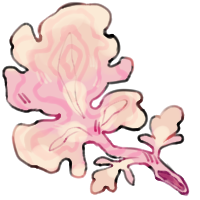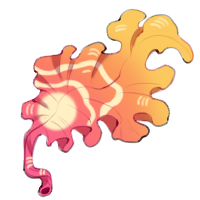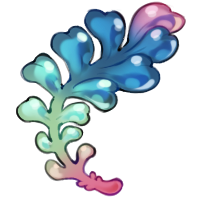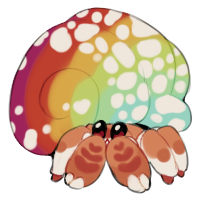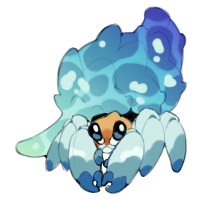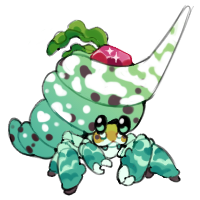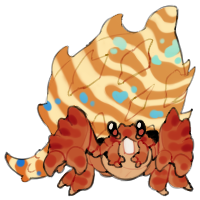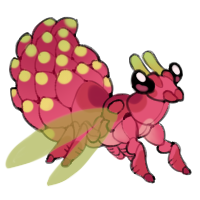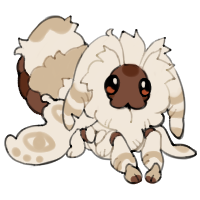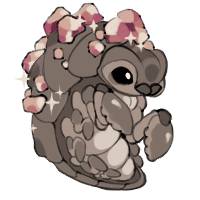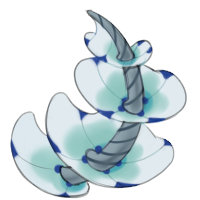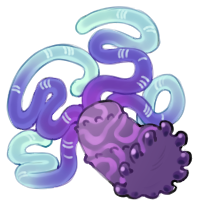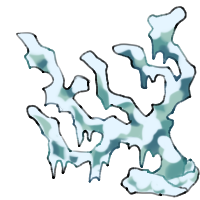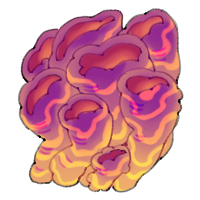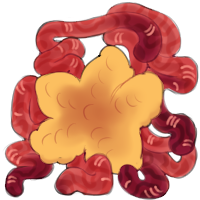Items
Spiked Shell
Look out! These spiky critters are abundant in tidepools and even in the shallow waters and reefs off the coast. They love to feed on Sweet Coral, and if you look closely you can find their empty shells to collect!
Sweet Coral
This coral is common in the more protected tidepool and reef areas, and are a vital habitat for many species on Capricorn-13. They come in many bright colors that Aramelles love to collect and craft with, and are a common foraging item!
Crunchy Seaweed
This type of seaweed is widely abundant around the roots of the mangroves, creating a safe home for many fish species. Symprites and Aramelles often harvest these to dry them out and sprinkle with various flavours for a tasty snack packed with nutrients!
Moonbug
These nocturnal bugs love the walls in caverns found along the coast! They feed on the salty algae that grows there and flash their light to attract mates. Many folk love to keep them in jars, but you have to catch them first!
Candy Sea Moss
This soft algae is a favorite treat among young bappies and mielles! Their blades are full of sugars and are a fun sweet treat during a long day of foraging. During festivals they are spun into fine silk and served in different shapes as a dessert.
Bubble Coral
The ends of this soft coral are actually small sacks full of natural gas. Young bappies and mielles have a fun game of collecting Bubble Coral and popping them at one another. If you squeeze carefully, you'll see that the air bubbles from pores around the tips.
Sunrise Seaweed
This colorful seaweed is a favorite food for Electric Party Goldies, and some folk theorize a diet featuring this food is where the fish gets its bright pink color from. This is just speculation though, since Sunrise Seaweed is an abundant food eaten by all kinds of fish and kiril.
Juicy Seagrapes
These seagrapes can make for a quick snack while spending a day in the tidepools! They naturally filter the salt from seawater then fill their hollow blades with fresh water infused with the grape sugars. Some folk have even been known to ferment them for delicate wines after cleaning off the salt buildup!
Swirled Tun Shell
These brightly colored shells often catch the attention of Symprites and Aramelles, especially the crafters. The snail like creatures that live in them are often found feeding on the gases from Bubble Coral found deep in the cavern pools. Just make sure the shell is empty before you collect them!
Midnight Conch
These large conch shells are a favorite for collectors. You can find them being sold by merchants in town, but if you want to find one yourself you have to wait for the right time! These conches only come to the surface when guided by a full moon, otherwise it takes a brave forager to gather them from the freezing depths they rest in.
Minty Spotted Conch
Don’t be fooled, this isn’t some swirled ice-cream! This conch is commonly collected for its fun shape and unique colors, although they can sometimes be tricky to find in the eelgrass beds that line the floor of the mangroves.
Tiger Horse Conch
These conches are fierce predators to the smaller Minty Spotted Conch. They are quite aggressive and territorial against each other as well, usually thrusting their shells against other conches in an attempt to flip their competitor over.
Lappafly
These gentle giants are named after their resemblance to the Lappa fruits. The roots of Lappa trees soak up the briney waters in the mangroves and pass on the saltiness to the fruit juices which Lappaflies feed on. Some Symprites tend to Lappafly flocks to harvest the savory nectar collected by the curled hairs covering their bodies, which is then used in brewing and baking.
Winter Bell Moth
These fluffy critters are nocturnal and emit soft chiming sounds of varying pitch when trying to attract a mate. When two moth tunes are harmonious with one another, they've found their mate for life. Folks often travel to the frost meadows at dusk in order to listen to their soothing melodies!
Ornate Isopod
These funky fellas are highly sought after by collecters for beautiful pets and crafters for their opalescent carapaces and gem-like minerals that build up on their shells. They are tricky to find as they dwell in the deeper trenches off the coast and are quite fast when they feel threatened, so only the most dedicated divers stand a chance of catching one!
Umbrella Worm
These dancing worms feed by pulsating their bells open and closed to pull prey inside, much like a venus flytrap. They often sit along the edges of trenches to catch matter particles that drift by and are sought after by collectors due to their small bioluminescent dots and mesmerizing movements.
Luminous Coral
This coral has a bite to it! They are carnivorous and naturally produce a toxin that can paralyze small prey that touch its tentacles. They are easy to spot as they emit a soft bioluminescent glow that is used to attract its prey in the dark depths, but divers have to be careful when collecting them as, although not fatal, their sting can irritate the skin.
Frost Coral
This unique coral is formed of a glass skeleton that comes from the eroding glaciers flushing down the frigid rivers. During the warmer seasons it forms in the waters and leaves behind its web-like glass domes over the surface when the colder season lowers the tides. Folks collect them in the winter months to craft wind chimes and decorations.
Sunset Sponge
These sponges can only be found in the sulfur pools that make up the natural hot springs in the arctic areas. They serve the unique function of releasing gas bubbles from their tubes which leads to a natural whirlpool motion that massages and exfoliates. Folks and critters alike use these pools to rest and rejuvenate when they need a break from the cold.
Fighting Seastar
These seastars are known for their aggressive behaviours. They will often fight each other to expand their own territories and have even been known to shed their own arms as a defense. Luckily they boast superior regeneration abilities that allow them to regrow any limbs lost in battle!
